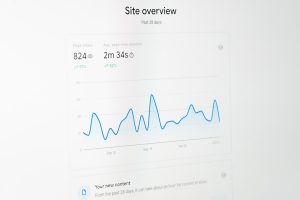
High traffic volume to your website can be a blessing or a curse—it all depends on how well you’re prepared. Imagine launching a marketing campaign or getting covered by a major news outlet, only to have your website crash because it couldn’t handle the sudden influx of visitors. Not only can this lead to lost revenue, but it can also damage your brand reputation. The good news is that you can take proactive measures to ensure your website is ready for the surge. Below, you’ll find steps and tips to help you prep effectively.
1. Audit Your Current Hosting Plan
Start by assessing whether your existing web hosting plan can support high traffic volumes. Shared hosting, for example, is inexpensive but limited in scalability. If you’re expecting a traffic spike, consider upgrading to a Virtual Private Server (VPS), Cloud Hosting, or even a Dedicated Server for more control and better performance.
- Shared hosting: Best for small websites, minimal traffic.
- VPS: Offers better performance and scalability than shared hosting.
- Cloud hosting: Scalable and efficient; ideal for high-traffic scenarios.
- Dedicated server: Maximum performance but at a higher cost.
If you’re unsure whether your current host can accommodate a spike, ask about burst capabilities and autoscaling features.
2. Optimize Website Performance
Performance optimization is critical when dealing with high traffic. A slow-loading website not only frustrates users but can also affect your SEO rankings. Some key elements to consider:
- Minimize HTTP requests: Reduce the number of files that your site loads.
- Compress images: Use tools like TinyPNG to lower image file sizes.
- Leverage browser caching: Helps returning visitors load your site faster.
- Use a content delivery network (CDN): Distributes your content and reduces server load.

3. Consider Load Testing
Load testing involves simulating a spike in website traffic to observe how your site performs under pressure. Tools like Apache JMeter, BlazeMeter, and LoadNinja can help you identify potential bottlenecks before they become actual problems.
By conducting load tests, you can determine:
- Maximum concurrent users your site can handle
- Response time under stress
- Failure points and weak components
4. Use a Reliable Content Delivery Network (CDN)
A CDN distributes your website content across multiple servers globally, reducing the distance between the user and your server. This results in lower latency and faster page loading, especially when you’re dealing with an international audience.
Popular CDN providers include:
- Cloudflare
- Amazon CloudFront
- Akamai
- KeyCDN

5. Enable Caching Mechanisms
Caching stores copies of files so they don’t have to be reloaded each time a user visits your website. Implementing caching at various levels—browser, application, and database—can have a massive impact on performance during high traffic.
Types of caching:
- Browser caching: Stores static files on the user’s device.
- Server-side caching: Stores dynamically generated pages.
- Object caching: Reduces database load by storing objects in memory.
6. Monitor in Real-Time
Once everything is in place, you’ll need to monitor your website’s performance in real-time. Use tools like Google Analytics, New Relic, or Pingdom to track visitor behavior, page speed, and error rates. This enables quick response and adjustments during a traffic spike.
You should set up alerts for:
- High traffic thresholds
- Increased load times
- Downtime or server errors
7. Prepare Your Team and Support
Ensure your development, marketing, and customer service teams know what to expect. High traffic volumes might result in increased customer inquiries or support tickets. Having scripts, FAQs, or even a temporary live chat assistant can prevent chaos.

Final Thoughts
Preparing your website for high traffic is not just about having the right technology—it’s about strategic planning, testing, and communication. By taking these proactive steps, you can turn what could be a stressful situation into a fantastic opportunity for growth and user engagement. Don’t wait for the traffic to arrive—start optimizing today!






